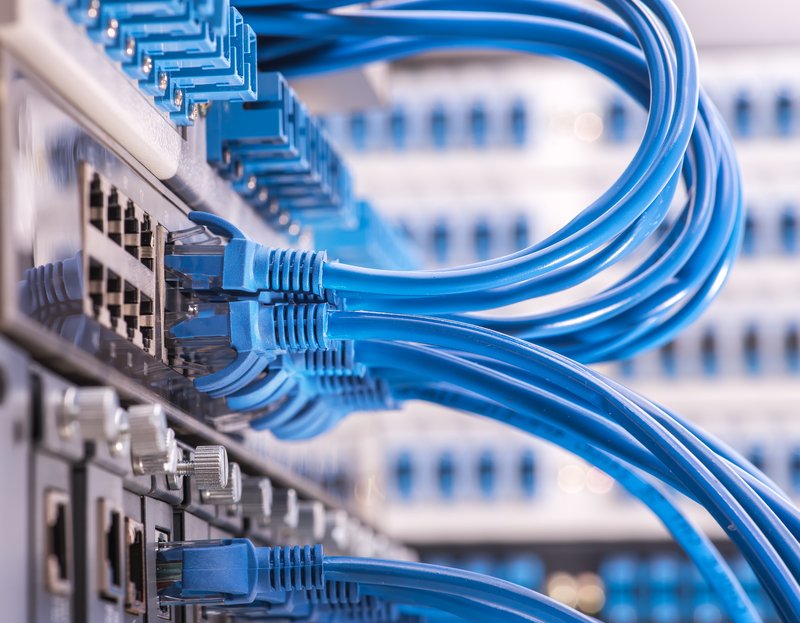
Most Local Area Networks (LANs) these days connect client computers to servers, printers, and/or the Internet using copper wiring. Fiber Optic cabling has been available for many decades and is used in certain LAN applications. But since copper (such as Category 5e or Category 6) is cheaper and can be more durable, it is the choice in most cases.
Common Reasons to Introduce Fiber Optic Cabling
Still, there are two common reasons to introduce fiber runs into a LAN design:
Distance
Speed
Before diving into these I should point out that there are other, less common, motives for fiber. Fiber is not susceptible to electronic “eavesdropping” since it uses light instead of electricity to transmit information, so it can be considered more secure. Of course, in high-security environments, data can (and should) be encrypted. That same differentiator also means that fiber can be a better choice in environments where strong electromagnetic interference could cause problems for copper cabling.
Category 5 and 6 cable is designed to operate properly over distances up to 100 meters. It is important to understand that this includes all cabling between two networked devices. Patch cables, service loops (the extra cable coiled in the ceiling to allow future maintenance work), and the fact that cable runs usually follow right angles and aren’t pulled “as the crow flies” all contribute to the length of cabling in a typical LAN.
In larger environments, running all cabling back to a single central point can exceed this limit. The solution is to have more than one cabling center, breaking the overall cable plant into two or more areas. These cabling centers are commonly referred to as IDFs (Intermediate Data Frame). The quantity and placement of IDFs ensure that no cable runs will exceed that 100 meter rule.
Typically, these will be connected back to the main wiring center (MDF, or Main Data Frame), providing a pathway from any device in the LAN to any other device. Those connections are usually made with fiber. This allows the IDFs to be significant distances from the MDF. This is vital in large offices, such as those that span multiple floors. It is also common in large single-story structures such as warehouses and factories. These connections form IDF to MDF are commonly referred to as the “network backbone.”
In addition to distance requirements, the use of fiber also can address speed requirements. When dozens of computers (or more) are served by an IDF, their combined data traffic back to the servers (and Internet gateway) at the MDF can require a faster pathway than copper can provide. Category 5e and 6 cablings are rated to carry 1 Gigabit/second. Note that some Cat5e is only rated for 100 Megabits (there is another paper on the Infassure library web page on this topic).
Why Fiber is the Right Choice
Fiber can exceed the Gigabit rating, with the most common premise fiber installed these days rated at 10 Gigabits. Further, multiple fiber connections can provide a higher aggregated bandwidth. Most fiber cable for LAN environments is 6, 12, or 24 strands. Each connection uses 2 strands, so even a 6 strand fiber cable can deliver 30 Gigs of total throughput.
